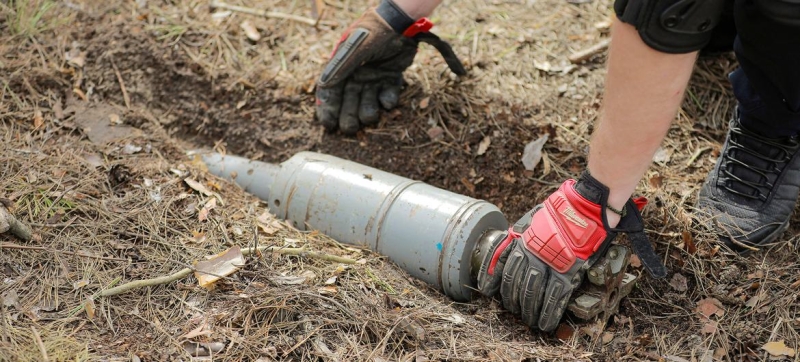
Experts are striving to return lands that are currently unusable due to mines to Ukrainian farmers as quickly as possible. INTERVIEW | “Every square meter we clear is important”: innovative methods of demining Ukraine Peace and Security
“Can we use a long-standing technology in a new way, or combine old and new approaches?” According to a specialist in mine and bomb disposal with more than 30 years of experience, the program in Ukraine is innovative in many ways.
Paul Heslop, the UN’s senior technical adviser in this field, is working with the Ukrainian government and other partners to find the most effective solutions to clear the world’s worst mine and unexploded ordnance contamination since World War II.
Innovative approach
“We use drones, underwater drones, robot dogs, small robots with various sensors using microwave, infrared technology, ultraviolet, various magnetometers, magnetic signals and radiological elements in combination with very powerful computers and artificial intelligence that interprets the results,” he said. But the most interesting innovation is not so much in the technologies being developed, but in the approaches to their use, the specialist noted.
Suspected or real pollution
Ukraine has two problems with mines, Heslop explained. Some areas are heavily contaminated and require significant resources and technical effort to clear. And there are areas that are of concern but are not actually contaminated with mines or other munitions.
Heslop stressed that the more effective the demining today, the less debt Ukraine will have to go into in the future: “We are trying to make sure that every square meter we clear is put to use. Will a school be built there? Will a hospital be restored? Will the clearance allow us to build a bridge, repair energy facilities or install a new power station?”
Food Production
Experts are trying to return land that is currently unusable due to mines to farmers as quickly as possible. “Before the conflict, I didn’t realize how much food Ukraine produces,” Heslop said.

UN Senior Technical Adviser on Mine Action in Ukraine Paul Heslop.
According to him, the suspected presence of mines and unexploded ordnance is hindering the restoration of agriculture. He said that the World Food Program used to buy food from Ukraine for four billion dollars a year – and this food helped save the most vulnerable people on the planet from starvation, for example, in the Middle East and Africa.
Insurance and Investments
Ukraine is different from most of the other countries where Heslop has worked in that it has a functioning government, the rule of law, a banking sector, an insurance and reinsurance market, and a system of land ownership. So when an economic benefit can be derived from a piece of land – whether it’s building an apartment building or producing energy – that income can be used to pay off the loan.
Heslop gave the example of a hill that needs to be cleared of mines and is in a windy area. A bond could be issued, for example, to cover the costs of demining and installing wind turbines. This clean energy could be sold, providing local residents with renewable energy, and the proceeds could be used to pay off bonds guaranteed by the government or an international investment bank.
Legacy of War
One of the tragic features of this war is the large number of people with amputated limbs, the UN representative noted, and this has economic and social consequences for Ukraine. However, he stressed that the country has qualified specialists, and Ukraine can become a leader in the field of prosthetics, robotic or AI-controlled limbs and other rehabilitation technologies: “If we have more than 20 thousand people with amputees who will need support over the next 40-50 years, how can we turn Ukraine into a world leader and a center of excellence in rehabilitation care?”
Most of the victims are young men who can contribute to the development of this sector and to the overall recovery. For example, Heslop noted, the UN Development Programme launched a pilot project in which 20 amputees were trained in data analysis and now work for some NGOs involved in demining, helping to identify dangerous areas and improve the efficiency of work.
Workers on the ground
According to the expert, about 200 teams are currently engaged in demining Ukrainian lands. 18 months ago, 500 to 700 people worked in this sector, and now there are 3,500 to 4,000.
Read also:
Hundreds of thousands of mines: professionals and volunteers across Ukraine are joining the work of clearing territories and protecting the population
It is planned that up to 15 thousand people will work in the field of demining: about half – under government contracts, the rest – in commercial or non-governmental organizations. Heslop noted that women currently make up about 15 percent of the workforce, and the project, in partnership with UN Women, plans to recruit hundreds more women over the next 18 months in an effort to achieve gender parity.
“Mine action is not as dangerous as people think. It’s certainly not the safest job in the world. But if you follow all the procedures, it’s very safe,” he stressed.
